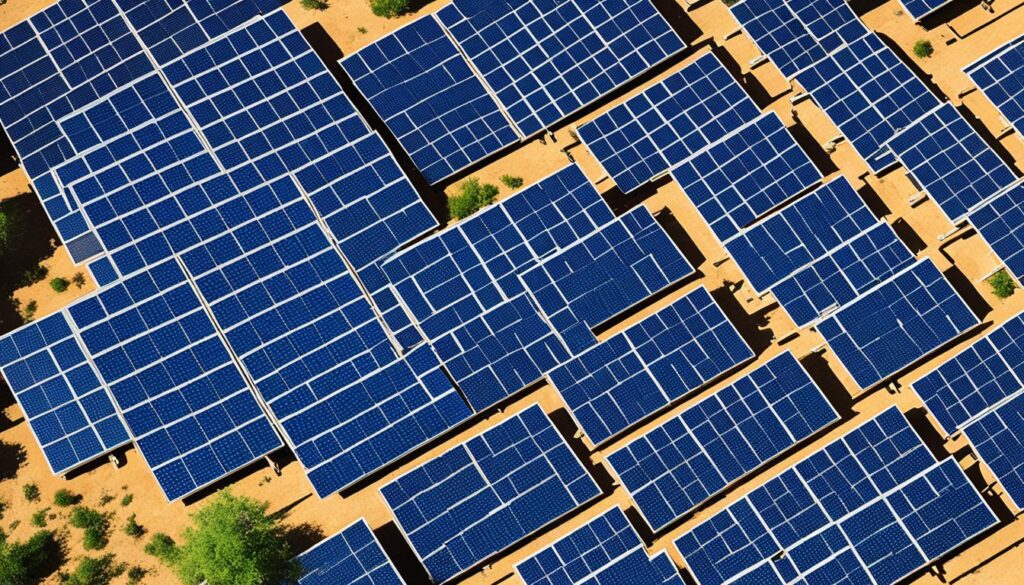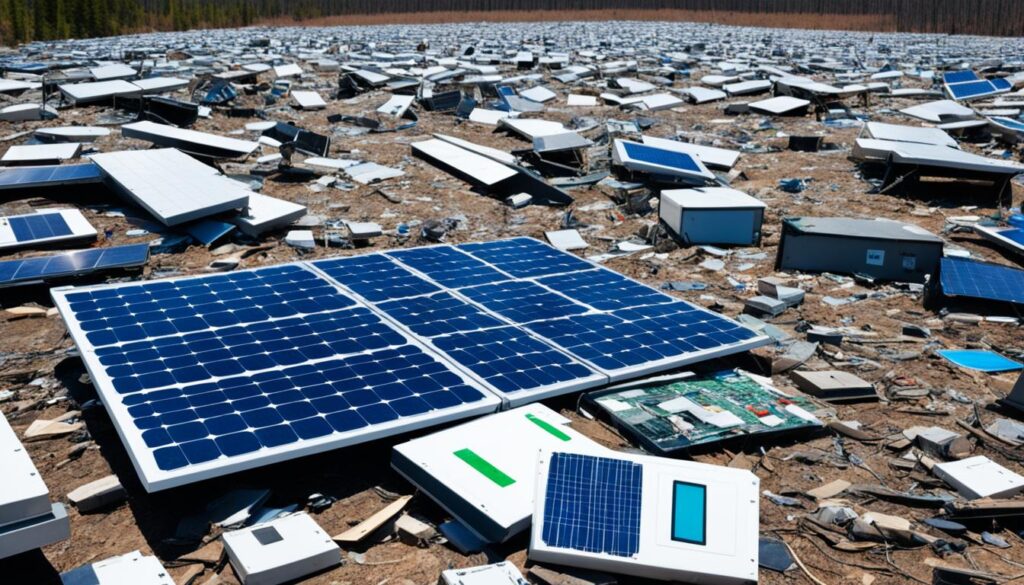Solar energy has gained significant popularity in recent years as a renewable and sustainable source of power. It offers numerous benefits, such as reducing carbon footprint, slashing energy bills, and increasing property value. However, it is essential to consider the disadvantages and challenges associated with solar energy, particularly in the Indian context.
Disadvantages of Solar Energy
While solar energy has immense potential, its drawbacks should not be overlooked. Understanding these limitations can help individuals and policymakers make informed decisions when considering solar energy as a viable option for meeting their energy needs.
One of the major concerns is the high initial cost of installing solar panels. The purchase and installation of panels, inverters, batteries, wiring, and other components can be a significant investment for many households. Although the cost of solar panels has been decreasing over the years, it remains a barrier for widespread adoption.
Another solar energy drawbacks are the weather dependency of solar energy. Solar panels require sunlight to generate electricity efficiently. Cloudy days and periods of low sunlight can affect the overall energy output of solar systems, making them less reliable during such conditions.
Moreover, the need for expensive storage solutions is another challenge. To store excess energy generated by solar panels, large batteries are required. These batteries can add to the overall cost, making solar energy systems even more expensive. Additionally, the space required for installing solar panels can be a constraint, especially for properties with limited roof space or other obstacles like windows.
Furthermore, it is crucial to acknowledge the environmental impact associated with the manufacturing and disposal of solar panels. The manufacturing process involves the use of toxic materials, and the transportation and installation of solar systems can emit greenhouse gases. While solar energy is still considered more environmentally friendly compared to other energy sources, mitigating these concerns is crucial for a sustainable future.
Despite these solar power disadvantages and solar panel limitations, solar energy remains a promising solution for India’s energy needs. With proper planning, consideration, and advancements in technology, these disadvantages can be minimized over time. As the cost of solar panels continues to decrease, solar energy can become a more accessible and sustainable option for individuals, businesses, and the nation as a whole.
Key Takeaways:
- The high initial cost of installing solar panels is a significant disadvantage.
- Solar energy is weather-dependent, which can affect energy production during cloudy days and low sunlight periods.
- Expensive storage solutions and limited space availability can pose challenges for solar energy systems.
- Pollution associated with manufacturing and disposal of solar panels needs to be addressed for a truly sustainable energy solution.
- Despite the drawbacks, solar energy offers numerous benefits, including reducing carbon footprint and energy bills.
High Initial Cost and Weather Dependency
One of the main disadvantages of solar energy is the high initial cost of installing solar panels. This cost includes the purchase and installation of the panels, inverter, batteries, wiring, and other components. Although the cost of solar panels has been decreasing over the years, it can still be a significant investment for many households.
Solar panels are composed of various materials, including silicon, which is a key component for converting sunlight into electricity. The mining and refining of silicon can be a costly and resource-intensive process, contributing to the overall expense of solar panels. Additionally, the installation process involves skilled labor, further adding to the upfront cost.
Despite the long-term financial benefits of solar energy, such as reduced electricity bills and potential government incentives, the initial investment can be prohibitive for some individuals or businesses. However, it is important to note that the return on investment for solar panels can be substantial over time, as they often pay for themselves through energy savings.
“The initial cost of installing solar panels may seem daunting, but it is important to consider the long-term benefits they offer. Solar energy can significantly reduce electricity bills, provide energy independence, and contribute to a greener future.”
In addition to the cost, solar energy is also dependent on weather conditions. While solar panels can generate electricity even on cloudy days, their efficiency significantly drops in unfavorable weather conditions such as heavy rain or snow. This weather dependency can impact the overall energy production and reliability of solar systems.
Solar panels work optimally under direct sunlight, absorbing and converting sunlight into electricity. Any obstruction, such as shading from nearby buildings or trees, can reduce their efficiency. Therefore, it is essential to consider the location and surrounding environment when installing solar panels for maximum sunlight exposure.
Finding the Right Balance
Despite the challenges posed by the high initial cost and weather dependency of solar energy, it is crucial to weigh these factors against the long-term benefits and environmental advantages. By considering available financing options, government incentives, and selecting suitable installation locations, individuals and businesses can overcome these drawbacks and make solar energy an economically viable and sustainable choice.
| Disadvantages | Considerations |
|---|---|
| High initial cost | – Explore financing options – Assess long-term savings |
| Weather dependency | – Optimize installation location – Plan for seasonal variations |
Expensive Storage Solutions and Space Constraints
Solar energy storage is a crucial aspect of harnessing the full potential of solar power. However, it comes with its own set of challenges. To store excess energy generated by solar panels, large batteries are required. These batteries can be expensive and add to the overall cost of a solar energy system.
Additionally, the space required for installing solar panels can be a constraint, especially for properties with limited roof space or other obstacles like windows. Solar panels need ample space to achieve maximum sunlight exposure and optimize energy production. This can be a significant consideration when deciding to switch to solar energy, particularly for properties with limited space.
To fully understand the impact of space constraints, let’s take a look at some real-life examples:
| Property | Solar Panel Installation | Space Constraints |
|---|---|---|
| Mr. Sharma’s Bungalow |  | The bungalow has a large rooftop, allowing for a sizable solar panel installation with optimal sunlight exposure. |
| Ms. Singh’s Apartment |  | The apartment building has limited rooftop space, making it challenging to fully maximize the potential of solar energy. |
As shown in the examples above, the availability of space plays a crucial role in determining the feasibility and efficiency of solar panel installations. It is important to consider the space constraints of the property before investing in solar energy systems.
In the next section, we will explore the environmental impact of solar energy and the pollution associated with the manufacturing and disposal of solar panels.
Pollution Associated with Manufacturing and Disposal
The manufacturing process of solar panels can have a significant environmental impact, contributing to pollution and harm. Additionally, the transportation and installation of solar systems can emit greenhouse gases, further worsening the pollution levels. It is crucial to acknowledge and address these issues to ensure a sustainable future.
Solar panel manufacturing involves the use of toxic materials and hazardous products. Various chemicals, such as lead, copper, and cadmium, are used during the manufacturing process, posing risks to both human health and the environment. The improper disposal of these materials can lead to soil and water pollution, endangering local ecosystems and communities.
According to a study published in the journal “Energy Policy,” the production of solar panels contributes to the emission of greenhouse gases, air pollutants, and water pollutants.
While solar energy is considered a cleaner and more environmentally friendly alternative to traditional energy sources, it is essential to address the pollution associated with its production and disposal. By implementing environmentally sustainable practices throughout the lifecycle of solar panels, such as utilizing cleaner manufacturing processes and promoting responsible disposal and recycling initiatives, we can minimize the environmental impact and ensure a greener future.
| Pollution Sources | Environmental Impact |
|---|---|
| Toxic chemical usage | Soil and water pollution |
| Greenhouse gas emissions | Contribution to climate change |
| Air pollutants | Deterioration of air quality |
| Water pollutants | Harm to aquatic ecosystems |
Conclusion
In conclusion, solar energy in India presents certain challenges and drawbacks that must be taken into consideration. The high initial cost of installing solar panels can be a barrier for many households, making it inaccessible for those with limited resources.
Furthermore, the weather dependency of solar energy can pose challenges, especially in regions with inconsistent sunlight. India’s diverse climate can affect the efficiency and reliability of solar power generation.
Expensive storage solutions for excess energy and space constraints also need to be addressed. The cost of batteries for storing surplus solar energy can add to the overall expenses of using solar power, and limited roof space may limit the number of solar panels that can be installed.
Lastly, the manufacturing and disposal of solar panels can contribute to pollution and environmental impact. It is crucial to find sustainable solutions to reduce the negative effects of the production and disposal processes.
However, despite these disadvantages, solar energy still offers significant benefits such as reducing carbon footprint and energy bills. As technology continues to advance and the cost of solar panels decreases, these challenges can be mitigated. With proper planning and consideration, solar energy remains a promising and sustainable option for fulfilling India’s energy needs.
FAQ
What are the disadvantages of solar energy?
Solar energy has several drawbacks, including the high initial cost of installing solar panels, the weather dependency of solar energy, the need for expensive storage solutions, space constraints for installation, and pollution associated with manufacturing and disposal of solar panels.
What is the high initial cost associated with solar energy?
The cost of installing solar panels includes the purchase and installation of panels, inverter, batteries, wiring, and other components. While the cost has been decreasing over the years, it can still be a significant investment for many households.
How does solar energy storage pose a challenge?
To store excess energy generated by solar panels, large batteries are required. These batteries can be expensive and add to the overall cost of a solar energy system.
What are the space constraints for solar panels?
Solar panels require a significant amount of space to achieve maximum sunlight exposure and energy production. Limited roof space or obstacles like windows can be a constraint for installation.
What pollution is associated with solar panel manufacturing?
The manufacturing process emits greenhouse gases during transportation and installation. It also involves the use of toxic materials and hazardous products, contributing to pollution and environmental harm.

